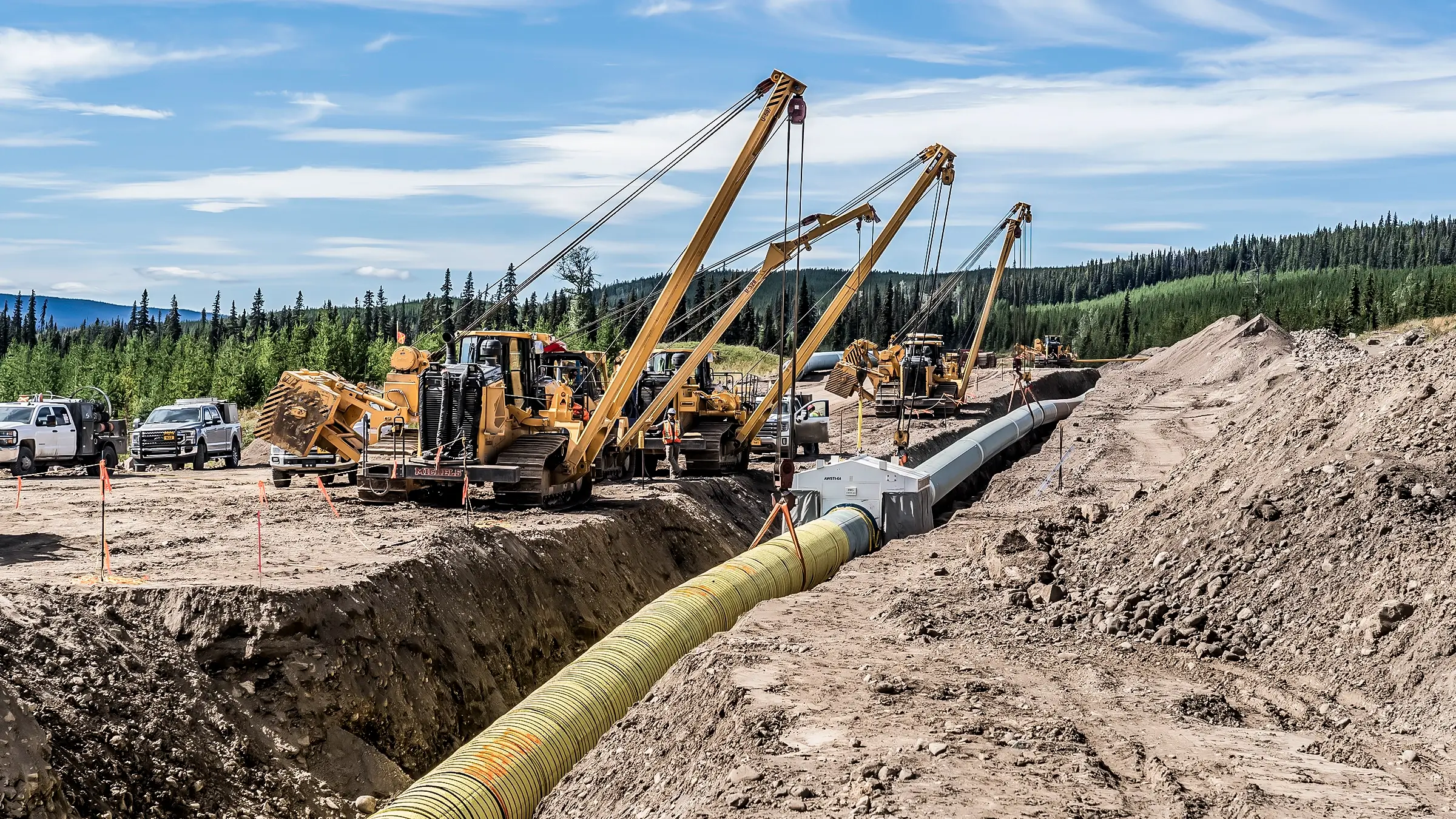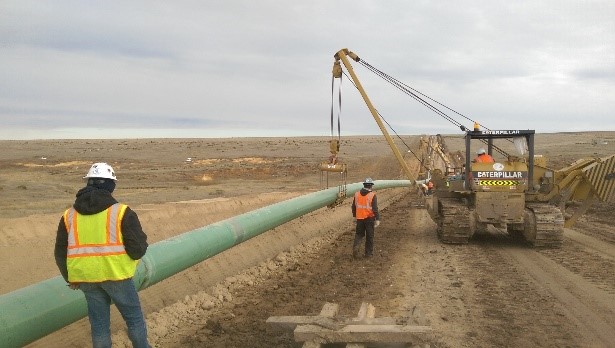Top 7 Mistakes to Avoid During Creek Pipe HDPE installation
What You Need To Understand About Pipe Trenching Services: A Detailed Introduction of Available Options
Pipe trenching services are essential for the setup and maintenance of below ground utilities. They entail various approaches tailored to details requirements and settings. Comprehending these approaches is crucial for effective job execution. Each alternative presents its own set of benefits and difficulties. As the need for effective utility monitoring boosts, knowing what to think about when choosing a trenching service ends up being vital. What elements should one focus on to guarantee success?
Comprehending Pipe Trenching: What It Is and Why It Matters
Although usually ignored, pipe trenching is a crucial process in different construction and energy tasks. This technique includes digging deep into narrow trenches to help with the installment of pipelines for water, gas, sewage, and telecommunications. The value of pipe trenching lies in its function in making certain that these important systems are effectively incorporated right into infrastructure, making it possible for the secure and efficient shipment of essential services.Proper trenching is vital for keeping the honesty of pipes and decreasing risks connected with dirt erosion and cave-ins. It also allows for effective evaluations and maintenance of underground utilities. Additionally, understanding the local regulations and environmental considerations is essential, as incorrect trenching can result in expensive delays and legal concerns. Inevitably, pipeline trenching offers as the fundamental step that supports various construction undertakings, making it a substantial facet of contemporary facilities development.
Common Trenching Methods for Underground Energies
In the domain name of below ground utilities, various trenching methods play a vital role in installation and maintenance - Creek Pipe Texas oilfield. The open-cut trenching technique, directional dull method, and hydro excavation process each deal one-of-a-kind benefits depending upon the particular task demands. Understanding these approaches is vital for effective and reliable utility administration
Open-Cut Trenching Method
Open-cut trenching is an extensively used approach for installing below ground utilities, particularly when the depth and size of the trench permit reliable gain access to. This strategy includes digging deep into a trench along the suggested course of the utility, giving direct presence and ease of access for installation. It is specifically useful for jobs that require comprehensive excavation, as it assists in quick installment and assessment. However, it also demands careful preparation to reduce disruption to the surrounding area, including web traffic and existing frameworks. Open-cut trenching is most effective in open areas where the dirt problems agree with, but it may be restricted in city settings due to the presence of existing utilities and other underground challenges.
Directional Boring Method

Hydro Excavation Process
How does hydro excavation stand out amongst usual trenching techniques for underground utilities? Hydro excavation makes use of high-pressure water and vacuum cleaner innovation to safely get rid of dirt, enabling for accurate digging around delicate below ground utilities. This technique reduces the danger of damaging existing infrastructure compared to typical mechanical excavation. By utilizing water to loosen the soil, hydro excavation offers a less intrusive strategy, lowering the possibility for dirt compaction and making sure a cleaner worksite. Furthermore, the process enhances visibility throughout excavation, enhancing overall accuracy and efficiency. Hydro excavation is specifically beneficial in city areas where utility lines are largely loaded, making it a favored choice for professionals concentrated on safety and security and accuracy in underground tasks.
Advantages of Trenching Solutions
While numerous methods exist for mounting underground utilities, trenching solutions offer distinctive advantages that make them a favored selection for numerous tasks. One significant benefit is the cost-effectiveness of trenching, as it usually calls for less customized equipment compared to choices like hydro excavation. This typically causes lower labor and functional costs. Furthermore, trenching can suit a large range of energy types, including water, sewage system, and gas lines, offering adaptability for contractors.Moreover, trenching allows for effective accessibility to numerous lines in a single excavation, reducing interruption to the surrounding location. The process also allows exact installment and repair, which is vital for sticking to governing criteria and ensuring long-term reliability. Ultimately, trenching can be performed fairly swiftly, lowering task timelines and enabling faster solution reconstruction. These benefits jointly make trenching solutions a sensible alternative for several below ground energy jobs.
Negative aspects and Obstacles of Trenching
Regardless of the countless benefits of trenching solutions, there are remarkable downsides and difficulties that need to be thought about. One considerable difficulty is the potential for soil instability, which can bring about collapses, positioning dangers to employees and tools. In addition, trenching can interfere with existing energy lines, demanding careful planning and coordination to avoid solution disruptions. The procedure can likewise be time-consuming, specifically in city areas where space is hop over to here minimal and gain access to is restricted. Trenching may require considerable licenses and regulatory conformity, adding intricacy and prospective delays to tasks. Environmental problems, such as soil disintegration and damages to regional environments, can arise from improper trenching methods. Lastly, the costs linked with trenching, including labor and devices, can escalate if unforeseen issues develop throughout the project, making it essential for stakeholders to evaluate these challenges against the advantages when thinking about trenching solutions.
Key Aspects to Consider When Selecting a Trenching Solution
Choosing the best trenching solution can greatly affect the success of a task. A number of vital elements must be analyzed to ensure an ideal selection. The company's experience and proficiency in trenching operations are visit this website vital; a well-established service with a solid track record is usually a lot more reliable. Next off, reviewing the tools made use of is basic, as modern-day equipment can improve effectiveness and precision. Additionally, it is significant to think about the array of solutions offered, consisting of excavation deepness and dirt type handling, to confirm they meet specific project requirements.Another factor to review is the firm's online reputation; customer testimonials and endorsements can give understandings into previous efficiency. Getting in-depth quotes that describe costs and timelines will certainly help in budget monitoring. Lastly, verifying conformity with regional regulations and sector requirements is important for preventing potential lawful issues. By reviewing these factors, customers can make an informed choice when choosing a trenching service.
Precaution in Pipe Trenching
In pipe trenching, precaution are important to ensuring worker protection and site integrity. Key components include the usage of individual safety tools, thorough excavation site examinations, and well-defined emergency feedback protocols. Carrying out these measures substantially decreases threats associated with trenching procedures.
Individual Protective Equipment
Security in pipeline trenching greatly depends on the appropriate use individual protective devices (PPE) Employees should use construction hats to shield against dropping objects, along with high-visibility vests to enhance their exposure on-site. Steel-toed boots are essential for foot protection against hefty tools and products. Additionally, handwear covers are necessary for hand security, especially when taking care of harsh or sharp things. Respirators might additionally be necessary in environments with dust or hazardous fumes. Eye protection, such as safety goggles, should be worn to shield against debris. Finally, hearing protection is important in loud job environments. By sticking to PPE standards, employees can substantially decrease the danger of injury and assure a more secure trenching procedure.
Excavation Website Examination
Effectively evaluating the excavation website is an essential step in guaranteeing a secure pipeline trenching operation. This process involves reviewing the website for prospective dangers such as underground utilities, unstable dirt problems, and close-by structures. A comprehensive evaluation enables the identification of risks that could jeopardize worker safety and security. In addition, confirming the dirt type and moisture degrees can help establish proper shoring methods to avoid trench collapses. It is important to ensure that the site is free from debris which proper signs is displayed to signal workers of ongoing operations. Routine inspections throughout the task can likewise assist spot any kind of modifications in website conditions, enabling prompt modifications to precaution and work methods.

Emergency Situation Response Protocols
Emergency action methods are important in mitigating dangers connected with pipe trenching operations. These procedures ensure that all employees are prepared to act promptly and effectively in emergencies. Secret aspects consist of normal safety and security drills, clear interaction networks, and designated emergency exits. Furthermore, first-aid sets and emergency situation call numbers need to be conveniently accessible on-site. Trenching operations should likewise include procedures for taking care of unsafe situations, such as cave-ins or utility strikes. Training workers on acknowledging prospective dangers and comprehending their duties throughout an emergency situation is critical. Keeping an upgraded website safety and security strategy can substantially boost action effectiveness. Generally, why not try here effective emergency situation readiness promotes a safer working setting and decreases the effect of unexpected incidents.
Price Factors To Consider for Trenching Services
Understanding the economic effects of trenching services is essential for task planning and budgeting. The costs related to trenching can vary widely based upon several variables, consisting of project dimension, soil kind, and deepness of the trench. Labor costs often stand for a considerable portion of the complete cost, as proficient operators are necessary for reliable implementation. In addition, equipment service fees can add to the overall spending plan, specifically for specialized machinery.Site availability is another crucial factor; tough surface may demand additional resources, raising expenses. Allowing and regulatory compliance can additionally include in costs, specifically in urban locations where policies are stringent.Lastly, unpredicted problems, such as running into existing utilities, can cause unanticipated costs and delays. Because of this, getting comprehensive quotes from trusted trenching provider is important for precise budgeting and making certain effective project completion.
Often Asked Concerns
For how long Does a Regular Pipe Trenching Project Take?
The duration of a common pipe trenching job differs substantially based upon variables such as depth, soil conditions, and job intricacy. Normally, it can take anywhere from a couple of days to a number of weeks to finish.
What Tools Is Generally Made Use Of in Pipe Trenching?

Are There Environmental Laws for Trenching Activities?
Environmental regulations for trenching tasks usually call for conformity with local, state, and federal guidelines. These laws intend to reduce ecological disturbance, protect water resources, and assurance proper waste management throughout excavation and setup procedures.
Can Trenching Solutions Be Integrated With Various Other Building And Construction Jobs?
Trenching services can without a doubt be incorporated with various building and construction jobs. By coordinating initiatives, efficiencies can be attained, lessening disruptions while making certain that all required infrastructure job is completed in a prompt and cost-efficient way.
What Are Common Dirt Types Run Into in Trenching?
Typical soil types experienced in trenching consist of clay, sand, silt, and loam. Each kind presents one-of-a-kind difficulties, affecting excavation approaches and stability, requiring mindful planning to ensure safe and effective trenching operations.